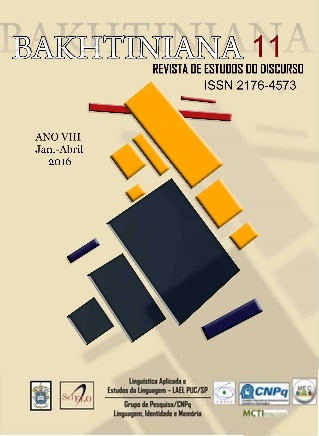Eavesdropping on Painting
Palabras clave:
Painting, Iconic Languages, Verbal Language, Dialogic Discourse, CuriosityResumen
This article claims that the principles of dialogic discourse are applicable to both verbal and iconic languages, because they share certain functions, such as the all-important metalinguistic one. The article studies in detail, from a Bakhtinian perspective, a series of six paintings created by the 17th century Dutch artist, Nicolaes Maes (1634–93). Each painting depicts different poses and gestures of an eavesdropper, in such a manner that the Bakhtinian analyst-viewer is obliged to see how painting of this curious sort combines surprising verbal and visual languages. Maes’ eavesdropper paintings concern curiosity, bringing together characters who might have preferred to remain independent of one another. The paintings deploy gestural, bodily, linguistic, and colour codes and make the visual material work creatively, allowing each language to take advantage of the expressive advantages of other languages. Several vantage points combine to show that the expressive capabilities of any given language are necessarily poorer when they rely on a single medium. A Bakhtinian perspective can shed new light on the paintings of Nicolaes Maes, while the analysis illumines new semantic possibilities in the thought of Bakhtin.
Descargas
Métricas
Descargas
Publicado
Cómo citar
Número
Sección
Licencia
Los autores le conceden a la revista todos los derechos autorales referentes a los trabajos publicados. Los conceptos emitidos en los artículos firmados son de absoluta y exclusiva responsabilidad de sus autores.


